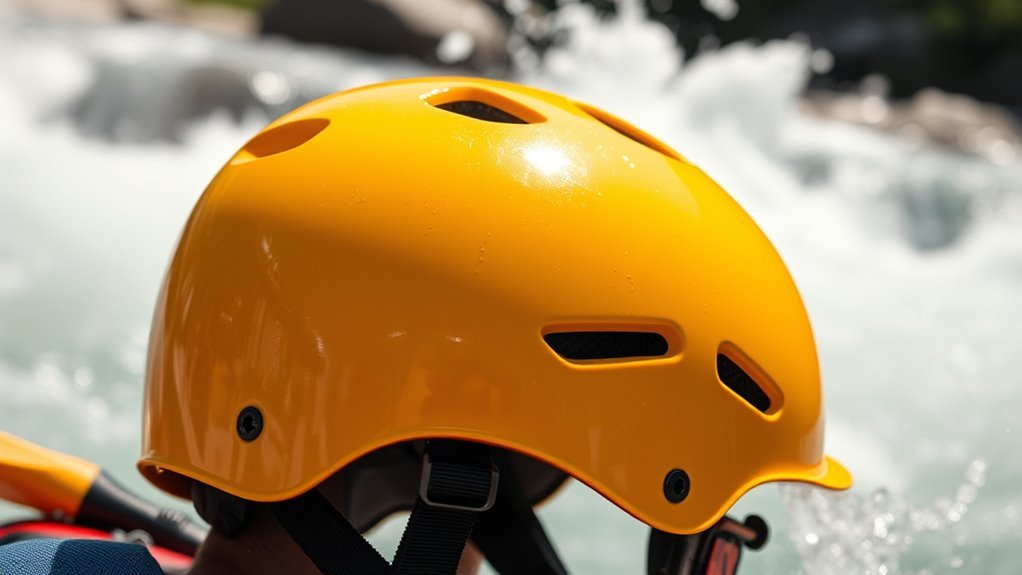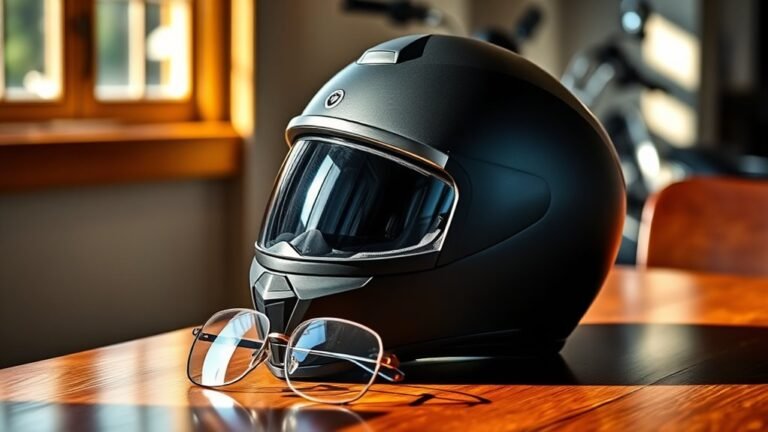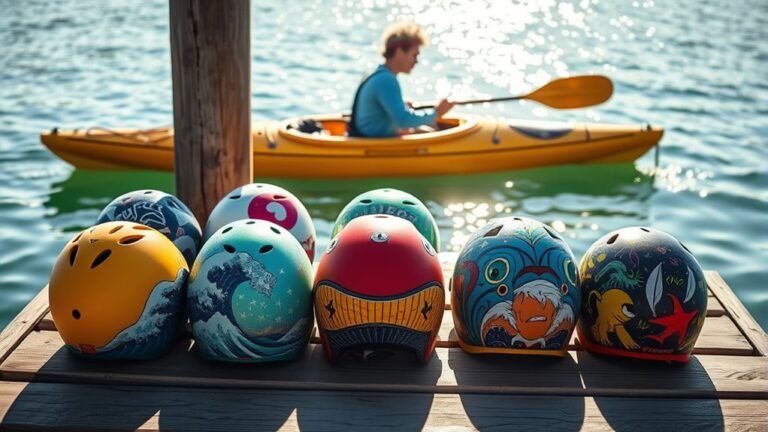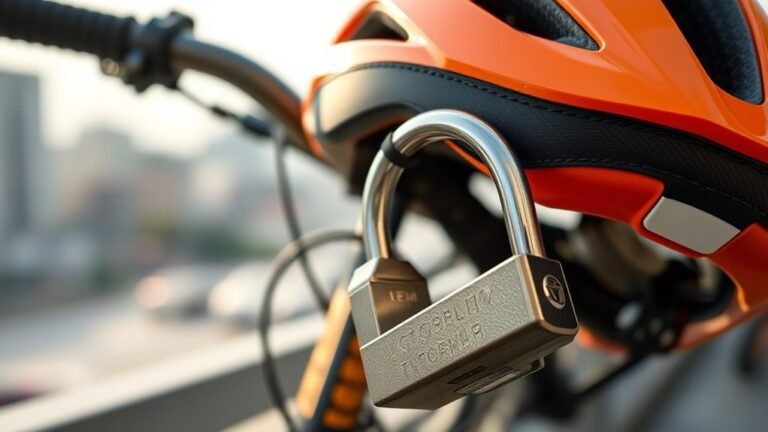Whitewater Rafting Helmet Buying Guide
When buying a whitewater rafting helmet, it’s essential to verify a proper fit for comfort and safety. Look for lightweight materials like polycarbonate that offer durability and impact resistance. Check for safety certifications like CE or ANSI to guarantee adequate protection. Decide between full face helmets for complete coverage or open face types for ventilation and visibility. Finally, maintain your helmet with proper care to extend its lifespan. There’s so much more to take into account—let’s explore it further!
Importance of a Proper Fit
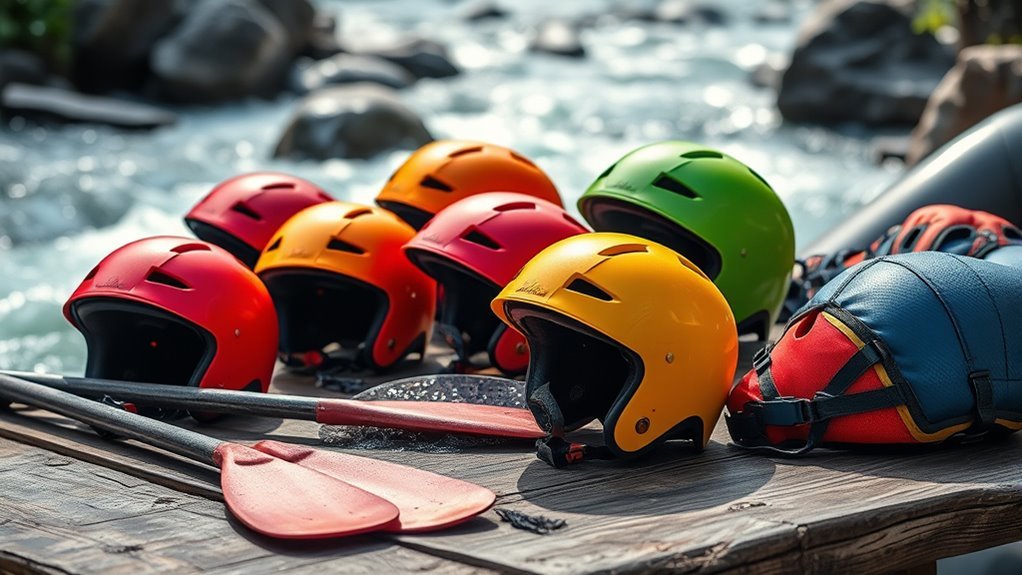
When you’re maneuvering the unpredictable waters of whitewater rafting, having a properly fitted helmet isn’t just a comfort—it’s a necessity. A helmet that fits snugly protects you from potential injuries, allowing you to focus on the thrill of navigating those wild rapids. Start by consulting sizing charts to find the right size for your head. Once you have your helmet, make those fit adjustments to guarantee it sits securely without causing discomfort. It should feel like an extension of yourself, providing freedom of movement while safeguarding your noggin. Don’t underestimate the importance of a proper fit; it can make all the difference between a fun adventure and an unsafe experience. Embrace the rush, but always prioritize safety!
Materials and Construction
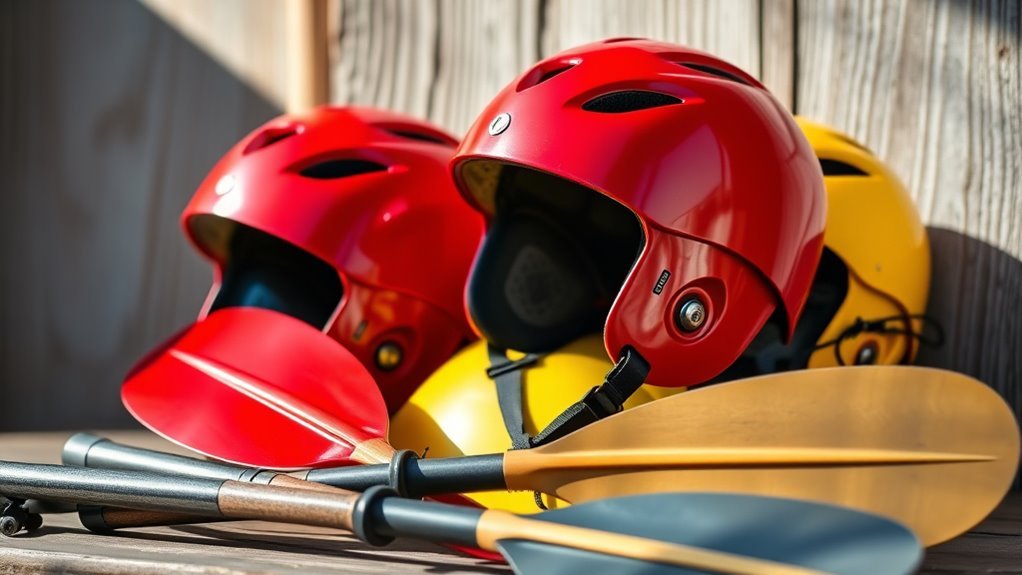
The heart of a good whitewater rafting helmet lies in its materials and construction. You want a helmet that combines lightweight durability with effective design features. Look for outer shells made from polycarbonate or fiberglass, as these materials offer excellent impact resistance and longevity. Inside, foam liners with proper insulation properties provide essential shock absorption, keeping your head safe during wild rides. Additionally, consider helmets with adjustable ventilation systems, allowing you to stay cool while maneuvering turbulent waters. A well-constructed helmet not only protects but enhances your freedom to explore the river with confidence. Don’t settle for anything less than top-quality materials that guarantee comfort and safety, letting you focus on the adventure ahead.
Safety Standards and Certifications
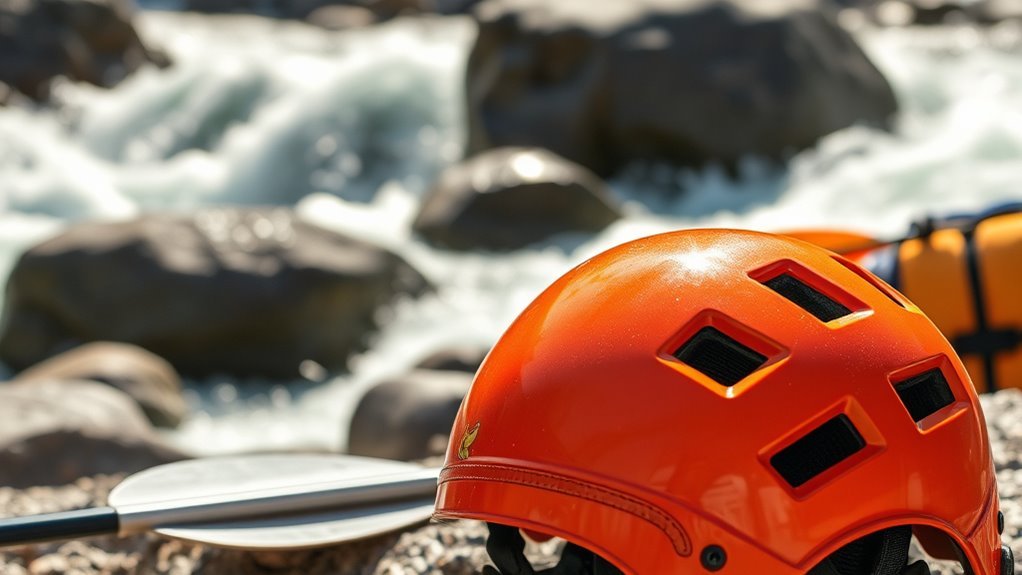
Choosing a helmet made from top-quality materials is only part of ensuring your safety on the river. You want to look for safety features that truly protect you against impacts and hazards. Certification labels are your assurance that the helmet meets rigorous safety standards. Helmets with certifications like CE, ANSI, or ASTM have undergone testing that guarantees their reliability. These labels indicate the helmet’s ability to absorb shock, resist penetration, and offer adequate coverage. Don’t just grab any helmet—take the time to check for these certifications. They’re a crucial part of your gear, ensuring you can paddle with peace of mind, knowing you’re protected while chasing those exhilarating rapids. Your adventure deserves nothing less than certified safety!
Types of Helmets for Whitewater Rafting
Maneuvering the diverse world of whitewater rafting helmets can feel overwhelming, but understanding the different types can simplify your choice. Full face helmets offer complete protection, covering your chin and face, making them ideal for challenging rapids and potential impacts. They’re perfect if you crave adventure without compromising safety. On the other hand, open face helmets provide excellent ventilation and visibility, allowing you to feel the rush of the wind on your face while keeping your head safeguarded. They’re a great choice for milder conditions where you want to stay light and agile. Ultimately, your choice hinges on your adventure style—whether you seek full coverage or prefer a more open experience. Choose wisely, and let the river call you!
Care and Maintenance Tips
While it might be tempting to toss your helmet in a corner after an exhilarating day on the river, giving it proper care and maintenance is essential for guaranteeing its longevity and effectiveness. To keep your helmet in top shape, start with simple cleaning methods. Rinse it with fresh water after each trip to remove dirt and debris, and use a mild soap for deeper cleans. Avoid harsh chemicals that can damage the material.
When it comes to storage tips, keep your helmet in a cool, dry place, away from direct sunlight. Consider using a padded bag to prevent scratches or dents. By following these care guidelines, you’ll guarantee your helmet remains your trusted companion on every thrilling adventure.
Frequently Asked Questions
Can I Use a Bicycle Helmet for Whitewater Rafting?
You can’t use a bicycle helmet for whitewater rafting. While it might seem convenient, bicycle helmets don’t meet the safety standards required for water sports. They lack the necessary impact protection designed for the harsh conditions of whitewater. The risks involved in rafting demand specialized equipment that can handle sudden impacts and water hazards. For your safety and freedom on the river, invest in a proper water helmet that meets these rigorous standards.
How Often Should I Replace My Rafting Helmet?
You should replace your rafting helmet every three to five years, even if it seems fine. Helmets have a limited lifespan due to wear and tear, and they may not meet safety standards after that time. If you’ve had a significant impact or notice any cracks, it’s essential to replace it immediately. Your safety and freedom on the water depend on reliable gear, so don’t compromise when it comes to protecting your head.
Are There Gender-Specific Helmets for Whitewater Rafting?
Yes, there are gender-specific helmets for whitewater rafting. Women’s helmet features often include a more tailored fit designed for narrower heads and longer hair. You’ll notice fit differences that enhance comfort and safety, allowing for better performance on the water. These helmets not only prioritize protection but also guarantee you feel free to enjoy the thrill of the rapids without distractions. Choosing the right fit can greatly enhance your rafting experience.
What Is the Weight Difference Between Helmet Types?
When it comes to weight, some helmets can weigh as little as 1 pound while others may be over 2 pounds. The difference often comes down to the use of lightweight materials like carbon fiber versus heavier plastics. A lighter helmet can enhance your experience, providing greater freedom of movement while still offering impact protection. So, if you’re seeking agility on the water, consider opting for a helmet that balances both weight and safety.
Can I Customize My Helmet With Stickers or Paint?
Absolutely, you can customize your helmet with stickers or paint! It’s a great way to express your personality and stand out on the water. However, keep safety concerns in mind; make certain any decoration doesn’t compromise the helmet’s integrity or visibility. Avoid covering vents or padding, and opt for non-toxic materials. With the right approach, your helmet can be a canvas for creativity, while still providing the protection you need on those thrilling rapids!
